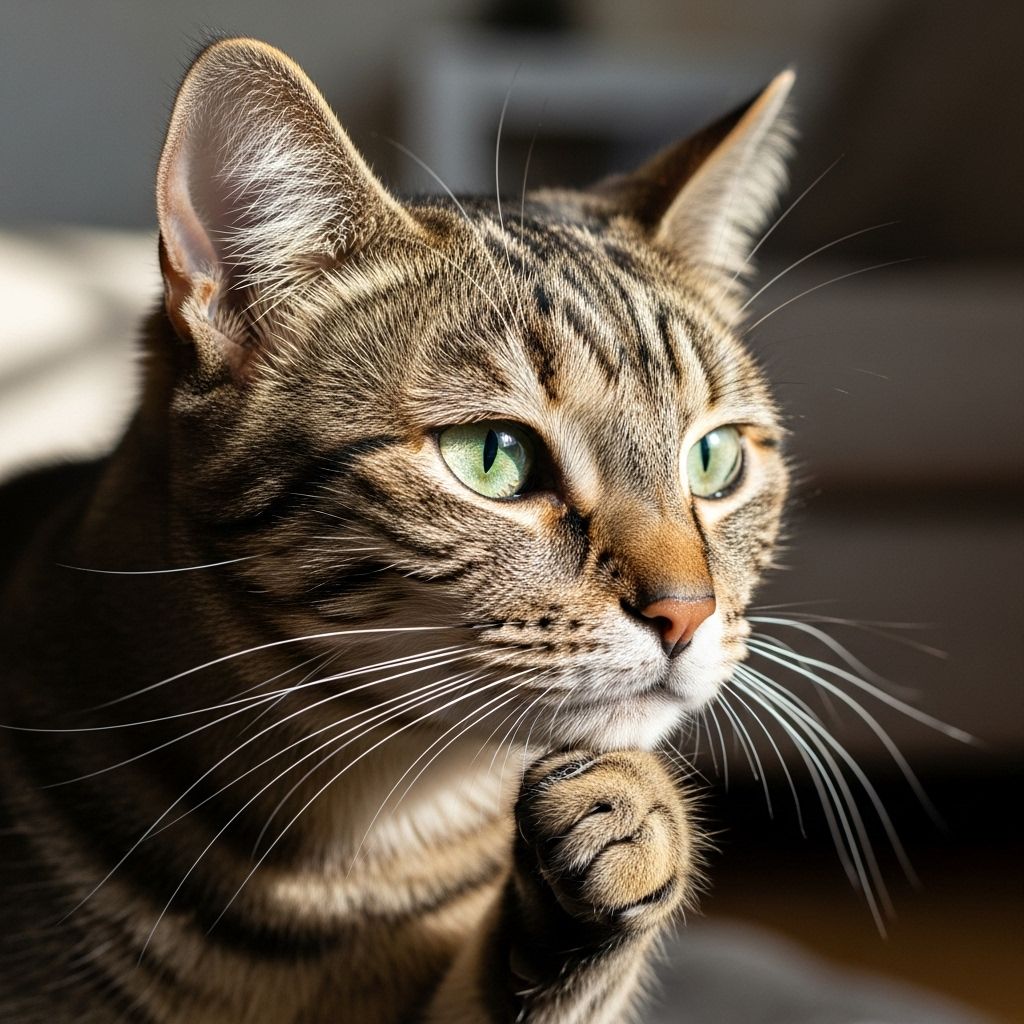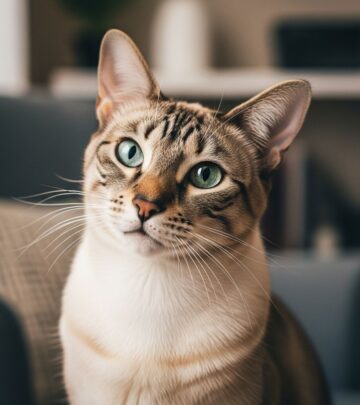Obsessive Compulsive Disorder (OCD) in Cats: Recognition, Causes, and Management
Repetitive routines may mask anxiety, and a calmer environment can ease feline discomfort.

Obsessive Compulsive Disorder (OCD) in cats is a complex and often misunderstood condition marked by persistent, repetitive behaviors that appear to serve no obvious purpose. Understanding the causes and available treatments is key for pet owners to help their feline companions live healthier, more comfortable lives.
What Is OCD in Cats?
In veterinary medicine, OCD describes a spectrum of behavioral disorders where a cat repetitively performs particular actions that seem functionally meaningless or inappropriate. These behaviors can interfere with daily life for both the cat and its owner.
- OCD behaviors are repetitive, exaggerated, or out of context activities.
- Such behaviors are often driven by stress or underlying medical problems, and are not simply bad habits or quirks.
- Common terms for these may include ‘compulsive,’ ‘stereotypic,’ or ‘repetitive’ behaviors.
Common Symptoms and Behaviors in Feline OCD
Cats with OCD may develop one or more of the following:
- Excessive grooming, leading to bald patches and irritated skin
- Overeating or suckling on fabric or themselves
- Repetitive vocalization or meowing that seems excessive or meaningless
- Chasing their own tails or pouncing on non-existent objects
- Pacing, spinning, or other repetitive physical movements
- Self-mutilation, including biting or licking at the same spot until raw
- Hostility toward other cats, animals, or even people
It’s important to note that not all repetitive actions are a sign of OCD—some may stem from medical conditions such as allergies, pain, or other illnesses.
What Causes OCD in Cats?
Feline OCD is multifactorial. Genetics, environment, medical issues, and early experiences may all contribute.
- Stress and Anxiety: Major life changes, new animals, or changes in daily routines can trigger OCD behaviors.
- Genetic Predisposition: Some breeds (e.g., Siamese, Burmese) may be more prone to OCD.
- Early Separation: Kittens taken from their mothers too soon might develop sucking or wool-licking behaviors later in life.
- Underlying Medical Issues: Skin disorders, pain, or neurological diseases can precipitate compulsive actions.
- Boredom and Lack of Enrichment: An unstimulating environment can be a risk factor for compulsive behaviors.
How Feline OCD Develops
The progression of OCD in cats often involves:
- A trigger (e.g., a stressful event or illness) prompts a repetitive behavior.
- The behavior becomes habit-forming.
- The cat begins performing the action outside of the original context.
- The cycle perpetuates itself: the behavior becomes a source of comfort, even as it disrupts normal life.
Diagnosing OCD in Cats
Diagnosis is a process of exclusion—cat owners and veterinarians must rule out physical health problems before attributing behaviors to OCD.
- Veterinary exams to exclude skin conditions, allergies, pain, parasites, or neurological disorders
- A thorough behavioral history, including onset, frequency, triggers, and environmental factors
- Observation and, if possible, video recording of the behavior by the owner
- Referral to a board-certified veterinary behaviorist when necessary
There is no specific laboratory test for OCD in cats. A veterinarian’s expertise is vital to differentiate between OCD and other conditions with similar symptoms.
Treatment and Management of Feline OCD
Once a diagnosis is reached, treatment should be comprehensive, targeting both behavioral and environmental contributions. In some cases, medication may be necessary.
Environmental Enrichment and Behavior Modification
- Increase mental and physical stimulation with interactive play sessions and puzzle feeders.
- Provide scratching posts, climbing structures, and safe hiding places.
- Ensure predictable daily routines to minimize stress.
- Address and eliminate potential stressors, such as unfriendly neighbor pets or overcrowding.
- Use positive reinforcement to encourage alternative, healthy behaviors.
Medical Interventions
- Medication: Anti-anxiety drugs (like fluoxetine or clomipramine) may be prescribed for moderate to severe cases. These drugs help normalize neurotransmitter levels to control obsessive tendencies. Effects can take several weeks to appear.
- Topical ointments or Elizabethan collars may be used to prevent self-injury during severe grooming.
- Pheromone diffusers (such as Feliway) can help reduce general anxiety and stress-related behaviors.
Other Supportive Measures
- Nutrition and Supplements: Some cats benefit from dietary adjustments such as increased omega-3 fatty acids, B vitamins, and antioxidants for mood regulation.
- Training: Reward-based training redirects negative behaviors and builds positive routines. Commands like “leave it” or “come” are useful tools.
- Consistent, patient care and increased attention help many cats feel safer and less anxious.
Can Feline OCD Be Prevented?
Prevention is not fully understood, but certain strategies may help minimize risk or severity:
- Provide kittens and adult cats with diverse forms of enrichment (climbing shelves, toys, window perches).
- Maintain a consistent routine, including feeding, playtime, and social interaction.
- Address medical issues like allergies or pain promptly.
- Meet your cat’s social and behavioral needs from an early age.
When to See a Veterinarian
Seek veterinary advice if your cat shows:
- Persistent grooming to the point of hair loss or sores
- Repeated vocalizations or movements that interfere with daily life
- Self-injury
- Behavioral changes after stressful events
Prompt intervention is important as untreated OCD can worsen and become harder to manage over time.
Living With a Cat Who Has OCD
Caring for a cat with OCD can be challenging but is often rewarding with the right approach.
- Be patient and avoid punishment, which only increases anxiety and entrenches compulsive behaviors.
- Work closely with your veterinarian or a feline behaviorist to tailor treatment to your pet’s needs.
- Celebrate small improvements, such as a reduction in frequency or intensity of compulsive acts.
- Monitor for relapses, particularly after stressful events, and adjust management as necessary.
FAQs: Obsessive Compulsive Disorder in Cats
Q: Can all repetitive behaviors in cats indicate OCD?
A: No. Repetitive behaviors may result from medical problems (like allergies or pain) or normal feline routines. True OCD is diagnosed only after medical causes are ruled out.
Q: Are some breeds more likely to develop OCD?
A: Yes, Siamese, Burmese, and other Oriental breeds may have a higher predisposition, especially for behaviors like excessive grooming or wool-sucking.
Q: How effective are medications for feline OCD?
A: Anti-anxiety medications or antidepressants like fluoxetine and clomipramine can significantly reduce OCD behaviors, but responses vary and treatment may be long-term.
Q: Will my cat ever fully recover?
A: OCD in cats is usually managed rather than cured. Most cats improve with consistent therapy but may need ongoing management and monitoring.
Q: Is it safe to use punishment to stop OCD behaviors?
A: No. Punishment increases a cat’s anxiety and often worsens OCD symptoms, making recovery more difficult.
Table: Symptoms and Potential Causes of Cat OCD
| Symptom | Possible Underlying Causes |
|---|---|
| Excessive grooming | Stress, allergies, pests, anxiety |
| Vocalization | Boredom, anxiety, cognitive decline |
| Pacing/spinning | Boredom, neurological issues |
| Self-mutilation | Pain, allergies, OCD |
| Wool-sucking | Early weaning, genetics, stress |
Supporting Your Cat’s Well-Being
Through careful observation, patience, and a comprehensive management plan, most cats with OCD can experience a greatly improved quality of life. Collaborate with your veterinary team to ensure your cat receives the best care tailored to their unique needs, and always address both medical and behavioral components for optimal results.
References
- https://www.petcarerx.com/article/can-cats-have-ocd/6524
- https://www.merckvetmanual.com/behavior/behavior-of-cats/behavior-problems-of-cats
- https://www.petassure.com/new-newsletters/obsessive-compulsive-behavior-in-cats/
- https://todaysveterinarypractice.com/behavior/managing-compulsive-disorders-in-cats/
- https://vcahospitals.com/know-your-pet/cat-behavior-problems-compulsive-disorders-in-cats
- https://www.petmd.com/cat/conditions/behavioral/anxiety-disorders-cats
- https://www.karenoverall.com/wp-content/uploads/2020/06/Protocol-for-understanding-treating-obsessive-compulsive-disorder_Overall.pdf
- https://www.cliniciansbrief.com/article/feline-compulsive-disorder
Read full bio of medha deb












